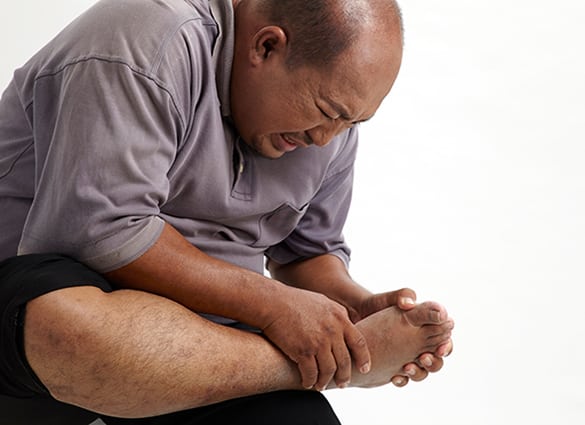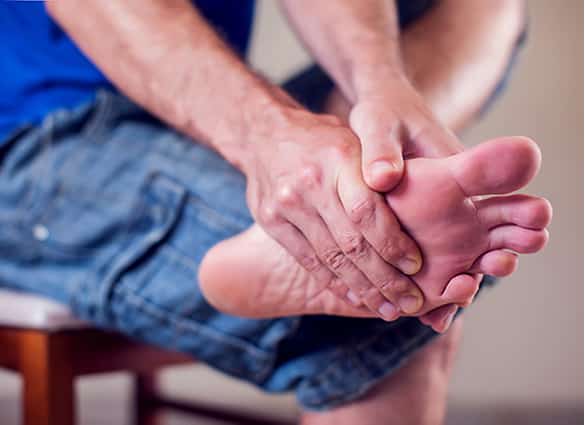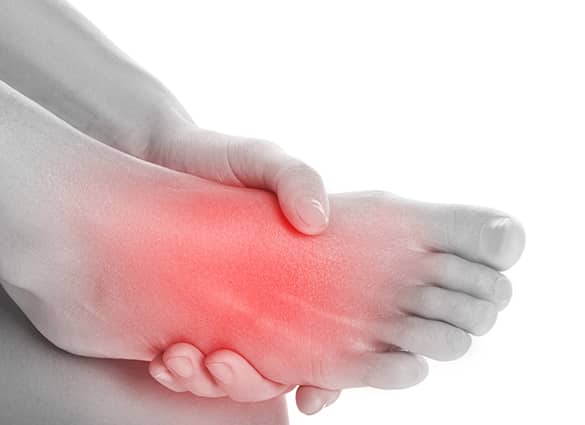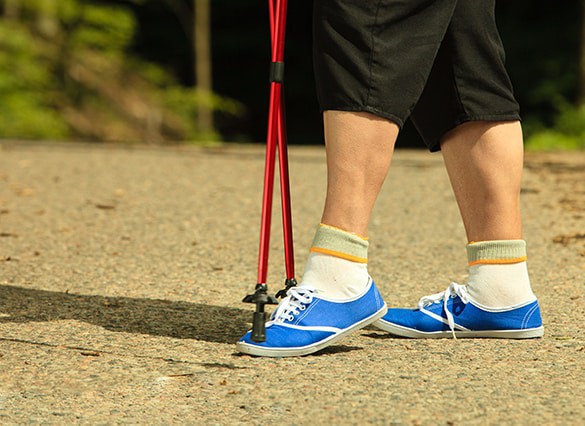
Results of history of trauma
Midfoot arthritis commonly results from a history of trauma to the middle section of the foot. Midfoot injuries are commonly associated with direct or indirect trauma sustained secondary to falls, twisting and crush injuries. Fractures and dislocations of the midfoot (eg Lisfranc fractures) are especially common in the sporting population. However, it may also develop due to abnormal foot posture (eg. flat foot deformity), or secondary to inflammatory diseases such as rheumatoid arthritis or gout.
Midfoot arthritis occurs when there has been damage to the joint cartilage that normally covers and protects the bones of the ankle joint.
In some patients with severe midfoot arthritis and structural deformity, surgery may be the best treatment option. If you have symptoms of midfoot pain, stiffness or swelling you may benefit from professional care from our experienced podiatrists.
What are the signs or symptoms of midfoot arthritis?
Pain across the middle of the foot, swelling and stiffness are the most common symptoms of midfoot arthritis. Stiffness in the midfoot is often noticed on the first few steps out of bed in the mornings. The pain is often aggravated by increasing activity, wearing unsupportive footwear and when walking on uneven terrain. You may also have difficulty with stair ascent and descent and in activities that require heel raise. You may notice a collapsed arch and the development of a flat foot.


How is midfoot arthritis diagnosed?
Midfoot arthritis is usually diagnosed after taking a history and performing a physical examination.
The physical examination includes:
- testing the flexibility foot and ankle joints
- testing muscle strength
- assessing your foot posture
- gait analysis
- testing your ability to perform a heel raise test
How is midfoot arthritis treated?
The goals of podiatric treatment are to minimise pain and discomfort, and improve function by enhancing midfoot stability and modifying loads sustained at the inflamed joints. Treatment options depend on the patient’s symptoms and severity of the arthritis.
Podiatric treatment for midfoot arthritis may incorporate a combination of the following:
- supportive stable footwear, sometimes medical grade footwear is required
- custom foot orthoses – to improve foot posture, stabilise the midfoot joints and help dissipate some of the force that would normally go through the foot with each step
- weight loss
- advice on pain medicines – modified release paracetomol may be helpful
- home exercise programs – exercises designed to keep the joints moving and the muscles that control the foot and ankle strong
- activity modification
- custom ankle foot braces – eg the Richie Brace
- Foot mobilisation therapy


